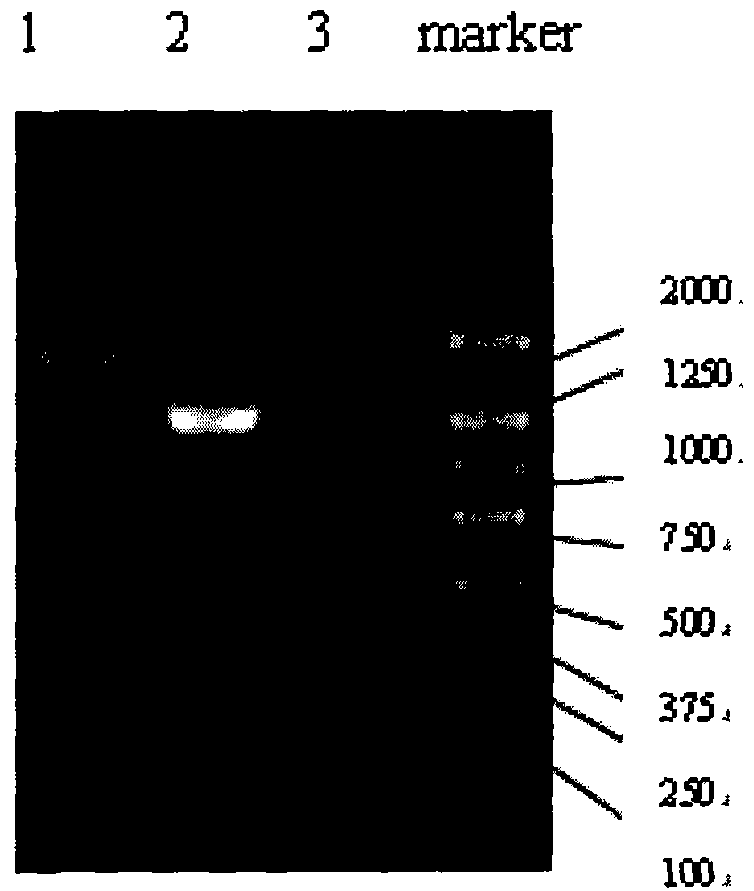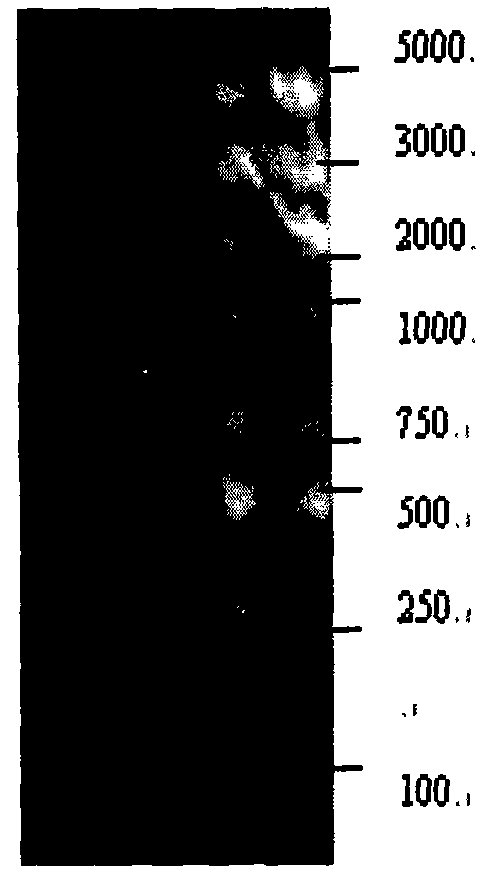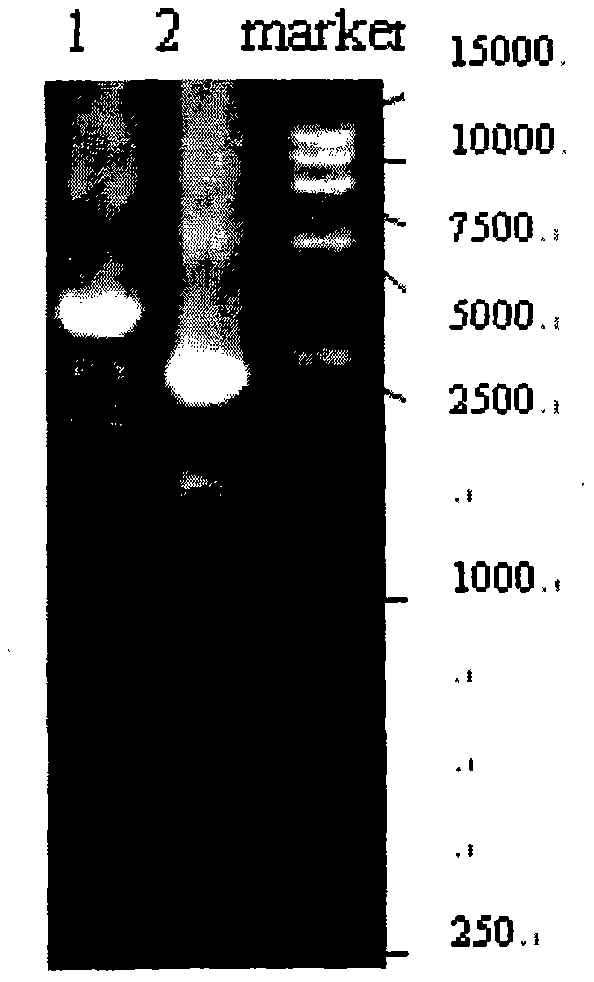Overlap extension PCR method capable of connecting multiple fragments
An overlapping extension and multi-fragment technology, which is applied in recombinant DNA technology, DNA preparation, etc., can solve the problems of low enzyme digestion efficiency and high requirements for the original template quantity of multi-directional ligation, so as to reduce mutations, reduce the number of reaction cycles, and high-efficiency amplification. Increased effect
- Summary
- Abstract
- Description
- Claims
- Application Information
AI Technical Summary
Problems solved by technology
Method used
Image
Examples
example 1
[0026] The equine infectious anemia virus infectious clone is inserted into the fluorescent tag IRES-EGFP to illustrate. The inserted base size is 1.3 kbp, and the total amplification length of SOE-PCR is 4.16 kbp. The vector PLG3-8 is in 7097 nt. And 8288nt contains single restriction sites XbaI and Xhol, the short fragment length is about 1.2kbp after double restriction treatment of PLG3-8. See the description figure 1 .
[0027] 1. Primer design: According to the published nucleotide sequence of the EIAV (GENBANK AF327878) vaccine strain and the full sequence of the vaccine strain obtained in the laboratory, two pairs of primers were designed using oligo5.0 to amplify the 3′-end LTR insertion position of the PLG3-8 plasmid For the two genes, the expected amplified fragments are 1.8kb (amplified by primers Penv1 and Penv2) and 1.1kb (amplified by PLTR1 and PLTR2). At the same time, a pair of primers was designed for the inserted sequence IRES-EGFP vector p-IRES-EGFP, and the a...
example 2
[0055] The Lentiviral Equine Infectious Anemia Virus (EIAV) infectious clone PLG3-8 strain and pIRES-EGFP were used for multi-fragment ligation.
[0056] 1. Primer design: design primer pairs, as shown in Table 2.
[0057] Table 2 Primers used in gene amplification
[0058]
[0059] 2. Subfragment template preparation
[0060] Plasmid PCR: ampicillin resistance screening vector plasmid EIAV infectious clone PLG3-8 and the pIRES-EGFP full-length gene vector to obtain amplification templates. Amplification using high-fidelity polymerase, using primers Eiav 1-1 and Eiav 1-2 to amplify the EIAV infectious clone PLG3-8 long nucleic acid sequence of about 2.1kb, referred to as fragment 1; using primers Eiav 2-1 and Eiav 2-2 amplified the nucleic acid sequence of the EIAV infectious clone PLG3-8env3' with a length of about 1.4 kb, referred to as fragment 2. The primers Eiav 3-1 and Eiav 3-2 were used to amplify the EIAV infectious clone PLG3- The nucleic acid sequence of about 1.8 kb in th...
example 3
[0086] We explored the amplification under the conditions of diluting the inner primers under different conditions, and performed a single-tube amplification connection for fragments 1, 2, 3 and 4.
[0087] 1. See Table 3 for primer sequence information
[0088] Table 3 Primers used in gene amplification
[0089]
[0090] 2. Subfragment template amplification Using the primer pairs in Table 3, fragments 1, 2, 3, and 4 were respectively amplified as subfragment templates. See Example 2 for amplification information.
[0091] 3. Fragments 1, 2, 3 and 4 under different dilution primers are connected
[0092] Add 10μM primers Eiav 1-1 and Eiav 4-2 each 1μl, and add equal amounts of primers Eiav1-2 and Eiav 2-1, Eiav 2-2 and Eiav 3-1, Eiav 3-2 and Eiav 3-2 in each lane. Eiav 4-1, the amount is 1 / 40, 1 / 80, 1 / 120, 1 / 160, 1 / 200 of the amount of the long fragment primers on both sides; the reaction system is: Ex Tag DNA polymerase 0.30μl, Ex Tag Buffer 5μl , DNTP 8μl (10mM), add estimated amou...
PUM
 Login to View More
Login to View More Abstract
Description
Claims
Application Information
 Login to View More
Login to View More - R&D
- Intellectual Property
- Life Sciences
- Materials
- Tech Scout
- Unparalleled Data Quality
- Higher Quality Content
- 60% Fewer Hallucinations
Browse by: Latest US Patents, China's latest patents, Technical Efficacy Thesaurus, Application Domain, Technology Topic, Popular Technical Reports.
© 2025 PatSnap. All rights reserved.Legal|Privacy policy|Modern Slavery Act Transparency Statement|Sitemap|About US| Contact US: help@patsnap.com



